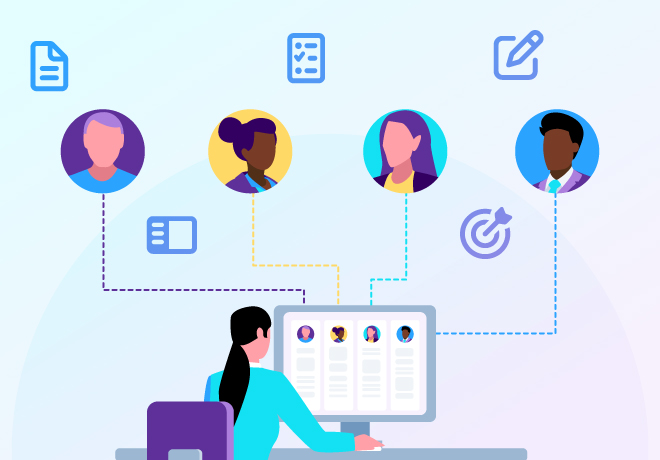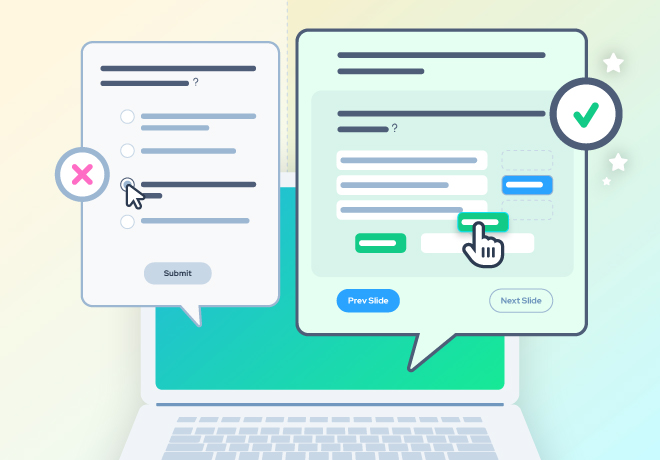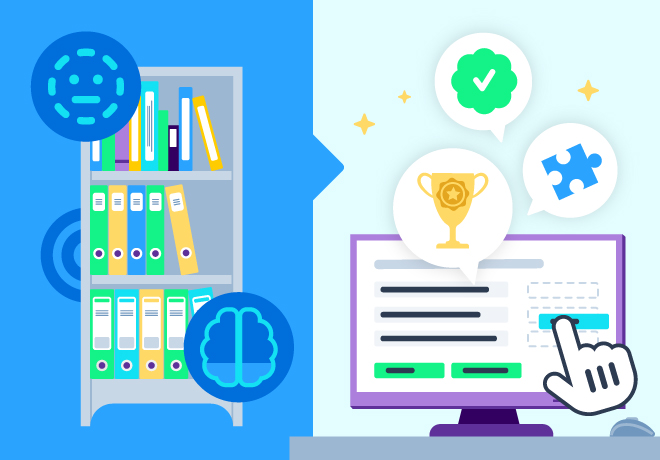
Your LMS is more than just an eLearning content library

Related articles
Get valuable eLearning insights to your inbox.
Listen to Neovation’s Demystifying eLearning podcast generated with NotebookLM!
Listen to our podcast on your favorite platform!
Getting learners fired up about training starts with providing a great learner experience. Since the learning management system, or LMS, is the main corporate learning hub, the way learners interact with and use it is important.
A good LMS combines the features of an eLearning content library or database, holding courses, videos, and curated content; a search engine; and an online learning space. It might include quizzes, a way for managers or admins to create and track individuals’ learning paths, and a system for offering certificates or badges when a learner completes a course or curriculum. Some LMS platforms even make it easy to manage instructor-led or blended training, simplify course enrollments, or send notifications and reminders to learners.
More than an eLearning content library

An LMS is primarily (but not only) a learning-resources catalog. It’s got to be easy to search, so learners can find the right courses and materials. The LMS is also the delivery platform for eLearning or online learning, and it should be easy to learn and navigate.
The simplest LMS might support only conventional eLearning “courses” — collections of slides or pages with text, images, and perhaps embedded videos and quizzes. Other LMS platforms are more robust and support additional features like:
- Ability to create or import eLearning content in a variety of formats, like videos, podcasts, and more
- Message boards or discussion forums where learners enrolled in a course can use an email-like format to discuss the material
- Gradebooks or other mechanisms for managers or instructors to record learners’ performance on assignments and quizzes
- Wikis or resource sections where instructors and/or learners can post curated content and link reference materials
- A place for a course syllabus in an academic setting
- A way for managers or admins to collect and analyze data on learners, from the basic — course completion, time spent — to the complex and customizable
- Dashboards to manage enrollment and notifications or reminders for instructor-led and blended learning solutions
- Integration with social collaboration platforms, third-party content libraries, and more
An eLearning hub
The LMS is the central hub for all learning activity.
The learner experience often starts with a search for courses or other content. Learners — or their managers — might be looking for specific course or they might browse a “catalog” of offerings.
The next step is enrolling and perhaps configuring the notices and reminders.
Some LMSs include a calendar function and way to set and track due dates and deadlines. Learners often submit assignments, take quizzes, and complete surveys using the LMS.
Many LMS platforms support some form of scaffolding or prerequisites to steer learners into courses in an appropriate order and prevent them from enrolling in advanced classes until they’ve completed the fundamentals.
Managers should be able to see learners’ progress and help them choose their next courses.
All in all, the LMS should provide a great experience: for learners, for their managers, and for the L&D team who oversee the creation and use of learning content.

An experienced writer, editor, tech writer, and blogger, Pam helps you make sense of learning science and eLearning technology. She provides information you can use to drive improvements in your training effectiveness and ROI.
Become part of our L&D community
We publish a new learning hub article — full of useful, practical topics — weekly.
Not sure where where you want to start? Jump into one of our recently published articles and see where it takes you!








-svg.svg)
-svg.svg)
-svg.svg)
-svg.svg)